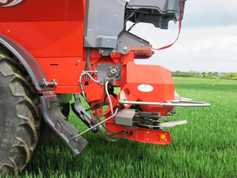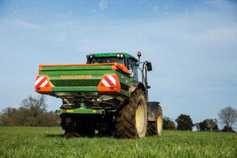While many farmers in the north and west are well prepared for long winters and delayed turnout, farmers in the south and east are normally able to turn out cattle quite early and February-calving farms are coming under pressure where housing facilities are tight and where cows and calves are usually turned out to grass at calving.
Numbers building inside
With cows calving and having to be held indoors as opposed to turning outdoors, this has meant a lot of extra pressure on bedded pens around yards, with calving sheds becoming particularly backed up. With newborn calves it is especially important that they have a clean, dry bed and adequate straw is a must in calving pens and loose pens housing cows and calves. On some farms where turnout has been delayed, slatted pens have been bedded to make temporary creep areas for young calves.
It is important that calving pens and loose sheds are cleaned out on a regular basis and disinfected where possible to avoid the build-up of bacteria, which could result in a scour outbreak. When sheds get crowded, stocking rates increase and so too does disease pressure. Make sure all sheds are well ventilated and try to eliminate any low-level draughts that could increase pneumonia levels. Make sure to herd calves on a regular basis and make sure all calves are sucking and keep a close eye for navel infections
On-off grazing
While dairy farms around the country can operate an on-off grazing system quite successfully, this can be quite tricky to operate on beef farms spring-calving with young calves. On some autumn-calving farms, this can be easier to operate where calves have access to one paddock close to the shed and cows are walked to another paddock for grazing during the day. Cows should be fed at night and let out to graze hungry the following morning to avoid excessive walking and damage to paddocks.
Cows should be given access to small areas of grass and a back fence used where possible to avoid damage to paddocks. The secret with spring grazing is hitting targets like having 40% of paddocks grazed by 17 March but this may need to be tailored to your own farm situation. This means that grass that has been grazed has been kick started to grow again.
Sacrifice paddock
Where cows and calves have had to be turned out, there is sometimes an option to feed silage via a silage feeding trailer or round feeder and curtail the cows to one dry field or paddock on the farm. It’s important that this paddock has good shelter and that calves have a dry area to lie.
It is extremely important that cows are not left hungry during the weeks immediately after calving. This can have a detrimental effect on milk yield and if too much condition is lost during this time it can have a negative effect on the subsequent breeding performance of the herd. Where silage quality is very poor, concentrates may also need to be fed along with 80g of Cal-mag/day to maintain body condition and avoid cows getting grass tetany. Concentrate amounts will depend on silage quality but will vary between 2kg and 4kg per head per day.
Nitrogen
Once ground conditions allow, spreading fertiliser should be one of the first jobs on the list regardless. Grass won’t grow to its full potential unless nitrogen is spread and ground has already been lost due to difficult ground conditions. Fertiliser should be ordered and in the yard, ready to spread, the minute ground conditions allow. Typical application rates should be 23 units/acre urea or 1 bag of 27.5 CAN/acre. Where there are issues with low P and K levels, compound fertiliser like 18:6:12 is a better option.






 This is a subscriber-only article
This is a subscriber-only article










SHARING OPTIONS: